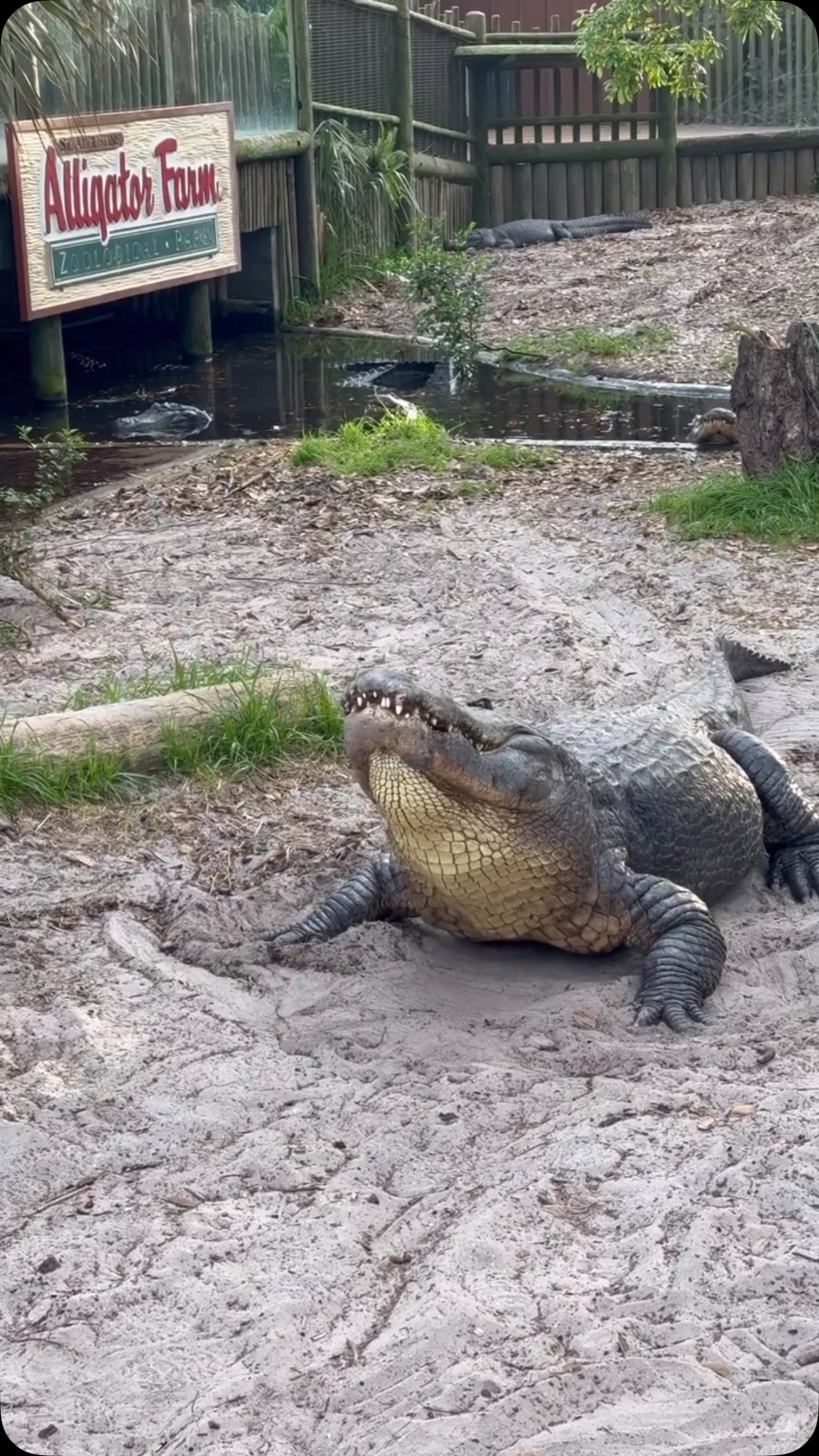- Alligator bellowing and communication during spring.
- St. Augustine Alligator Farm’s role in conservation and education.
- Anatomy and behavior of alligators.
- Importance of public engagement in wildlife conservation.
- Environmental implications of alligator habitats.
Alligators are a fascinating species, especially noted for their unique communication methods during certain seasons. In spring, alligators become particularly vocal, primarily engaging in an activity known as bellowing. This behavior is crucial as it serves multiple functions, including communication of size, distance, and mating intentions. The bellows are a deep, resonant sound that travels over significant distances in their aquatic habitats. It’s a quintessential part of alligator life, enabling these robust reptiles to establish territories and find mates. Males bellow to attract females and deter potential rivals, establishing dominance in a natural orchestra that resonates throughout swamps and marshlands.
The St. Augustine Alligator Farm plays a vital role in the conservation of reptiles like alligators and serves as a beacon of education and preservation. Established over a century ago, this institution has been instrumental in not only showcasing the biodiversity of reptiles but also in reinforcing their conservation efforts. By facilitating research programs and conservation projects, the Alligator Farm actively contributes to the understanding and preservation of alligator populations. By engaging the community with informative exhibits and demonstrations, it helps foster a deep appreciation for these ancient creatures. This engagement is crucial, as public awareness can significantly impact conservation outcomes.
Anatomy and behavior are key aspects when studying alligators. These remarkable reptiles, with lineage traceable back to the age of dinosaurs, boast an anatomy perfectly suited for their semi-aquatic lifestyle. Their muscular tails, powerful limbs, and armored bodies make them formidable hunters and survivors. Alligators are ambush predators, using their camouflage and stealth to capture prey. Their lungs, designed for both land and aquatic environments, support extended periods underwater. This duality of habitat use reflects in their behaviors, including the aforementioned bellowing, which is adapted to both mediums. Understanding these behaviors and their anatomical advantages is critical to appreciating their role in ecosystems.
Public engagement is a powerful tool in wildlife conservation. The St. Augustine Alligator Farm exemplifies this by creating an environment where visitors can interact with and learn about alligators firsthand. Programs designed to educate visitors on the ecological importance of alligators can inspire support for conservation initiatives. This support extends beyond mere awareness, as it can influence policy changes and increase funding for wildlife protection efforts. Realizing the role each species plays in its ecological niche, and how human activities impact these roles, can lead to more informed and compassionate community actions toward conservation.
The environmental implications of maintaining alligator habitats are significant. Alligators act as ecological engineers, shaping their habitats by building nests and creating dams which in turn provide habitat for other species. By conserving alligator populations, we ensure the health of broader wetland ecosystems, which are crucial for biodiversity. These wetlands also serve as natural water filters and buffers against floods, highlighting the intricate balance between alligator conservation and broader environmental health. Political and social efforts to protect these areas from urban expansion and pollution are imperative to maintaining this delicate balance.
Through a detailed exploration of alligator life and conservation efforts, including the pivotal role played by institutions like the St. Augustine Alligator Farm, it becomes clear that education and understanding are keys to preserving these remarkable reptiles and their habitats. Their continued study not only enriches zoological knowledge but also enhances our appreciation for natural ecosystems.
*****
Source Description
☀️ Good morning from the St Augustine Alligator Farm! Repost from Jim Darlington, Curator of Reptiles 🐊
Alligators are bellowing a lot more now during the spring season to communicate to other alligators: letting each other know they are looking for a mate, how big they are, how far away or close they are, etc.


